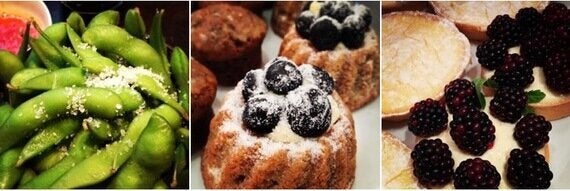If you've spent any great deal of time on Facebook lately, you will have seen a growing number of short, colourful recipe videos from the likes of Tastemade and BuzzFeed's Tasty. Rarely longer than 90 seconds, these clips have a hypnotic quality which has captured the attention of millions - and set their mouths watering.
The prevalence of this kind of content isn't surprising; one of the reasons #foodporn photography has become so popular is that there is something just altogether satisfying about seeing a perfectly arranged plate. Video channels like Tasty and Tastemade have simply taken this one step further, condensing all of the best bits of cooking shows into short, snackable videos.
"The clips are akin to ASMR videos," says The Cut's Dayna Evans. "They tap into the pleasure centre of my brain with their mesmerising simplicity, lack of fussiness, and quick pace. They make cooking seem painless, sedative. In a sea of free-flowing content hitting my already-scattered brain (often without my asking), Tasty videos act as calming one-minute meditations."
Evans has a point. We're so often required to have an opinion and take an adversarial stance on social media, whether it's on who should win the next election or something entirely more frivolous, that taking sixty seconds to enjoy the perfect grilled cheese video is practically an exercise in mindfulness.

Food is a universal pleasure that transcends language, which is why recipe books and cookery shows will never go out of style. It's also why more and more media companies are keen to get in on the action. Tastemade has 1.3 billion monthly views on Facebook, and is now looking to replicate this success on Instagram, where it currently gets 300,000 daily views.
"There is a natural aesthetic of what works well on Instagram with images that you can duplicate with video," Head of Programming Oren Katzeff tells Digiday. "Instagram is going to want to see more videos now that they're tweaking the algorithm... Quality and relevance are going to win out over quantity, and there's room for high-quality food and travel videos for the platform."

But is #foodporn bad for you?
Can a constant stream of pizza, cheeseburgers, chocolate and wine in your Twitter or Instagram feed have a negative psychological impact? There has been anecdotal evidence to suggest that the ubiquity of food porn online might lead to an unhealthy relationship with food in real life, in much the same way that it is argued that pornography results in men having unrealistic views and expectations of real sex.
However, a recent study by Yelena Mejova at the Qatar Research Institute has found that the exact opposite may be true. After examining almost 10 million Instagram posts, Mejova and her colleagues found that in terms of sheer likes, images tagged #foodporn which related to healthy food fared better overall than images of desserts or junk food.

"The heightened social approval of healthy tags suggests that the community is already self-policing in promoting a healthier lifestyle," the report explains. "The sentiment associated with #foodporn indicates that it is used to motivate healthy living, especially in countries with high GDP per capita."
According to the MIT Technology Review, Mejova's foodie findings are solid evidence that "social media is a 'persuasive technology' that not only records habits and sentiment but can change them, too."
In other words, those avocados on your timeline aren't going anywhere anytime soon.
This article originally appeared at Ogilvydo. Images courtesy of First We Eat.